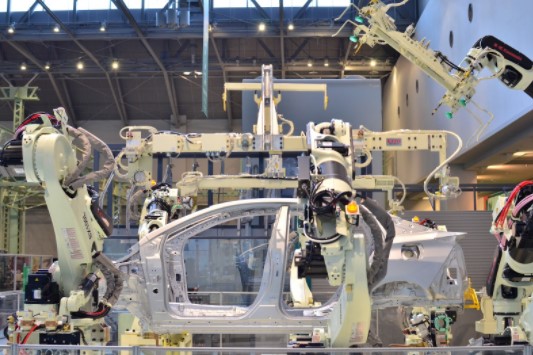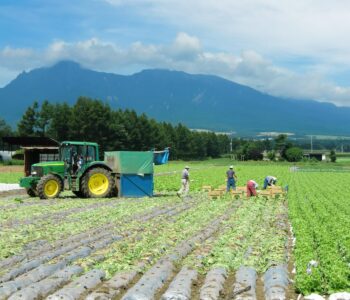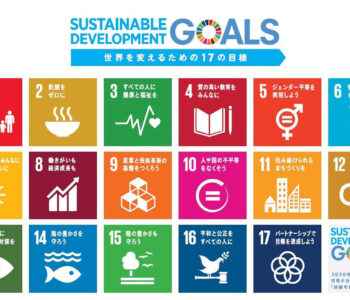 Industries
Industries
Smart Cities in Japan: Practical Innovations for Conscious Future…
By Emma Regan

Here, we take a look at how smart cities in Japan are building a better economical, ecological, and social future, and which companies are behind the production of these smart cities.
What are Smart Cities?
A smart city is a framework composed of ICT to develop, deploy, and promote sustainable development practices to address urbanisation challenges. It works through a network of connected machinery and objects that transmit data using wireless technology, where cloud-based IoT applications receive, analyse and manage data to help local governments, enterprises and citizens make better decisions that will improve quality of life. Companies around the world are investing in more and more smart cities to achieve this, with around 443 smart city projects in 286 cities currently worldwide.
Why are Smart Cities in Japan so Important?
Smart cities in Japan are gradually increasing in number across various prefectures, with progressively more companies joining the Smart City Institute Japan, a non-profit organisation that connects sectors engaged in the development of smart cities in Japan. Smart cities started to come into the picture after the Great East Japan Earthquake in 2011 when the government recognised that the finite nature of electrical power and modern civilisation was built on fragile foundations. 2020 saw more than fifty project proposals from local governments, but only five received the go-ahead by the end of the year. Developments have steadily continued however, and the Japanese smart cities market is forecast to grow at a CAGR of 13.1% between 2022-2027.
Contrary to smart cities in the US, where the main focus is making technology upgrades for efficiency and ecologically awareness, smart cities in Japan focus on social cohesion and addressing social issues, such as the country’s ageing population. Japan’s national vision is for a data-driven, human-centric, next-generation society that uses AI, big data, and IoT known as Society 5.0, that will provide appropriate solutions using such technology.
Smart cities such as Kashiwa-no-ha and Fujisawa are already showing fundamental results of how smart is the way forward, and are encouraging other investors from Japan and the rest of the world to understand why it is important to build a smarter future.
Companies Building Smart Cities in Japan
Panasonic: Fujisawa City, Kanagawa

Known for manufacturing electronic appliances, Panasonic was one of the first companies that successfully built a smart city in Japan in Kanagawa Prefecture. With the increase of production moving out of Japan and power plants being left untouched, Panasonic wanted to give back to the community by producing an urban development that would be sustainable enough to last for 100 years.
Fujisawa Sustainable Smart Town (FSST) was backed by 18 different businesses, universities, local governments and residential organisations, and opened in 2014 to 100 families. It has now transformed into a community of 2000 people. It is still being built, with completion predicted for later in 2022. Panasonic targeted five areas to focus on within its smart city; energy, security, mobility, wellness, and community. The aim was to reduce CO2 emissions by 70%, reduce water consumption by 30%, and have renewable energy account for 30% of the total energy used. The homes were also tested against a magnitude 1.8 times stronger than the Great East Japan Earthquake.
The smart city’s energy system has also been generated to store enough energy for up to 3 days in case of a natural disaster-related emergency. 30,000 people have taken tours of FSST from governments and businesses residing in over 50 countries across the world and it became the stepping stone for other ventures by Panasonic, including Tsunashima Sustainable Smart Town (TSST), which opened in Yokohama Prefecture in 2018; and Suita Sustainable Smart Town, which, focusing in particular on smart city technology-assisted care for the elderly, opened in April of 2022.
Accenture: Aizuwakamatsu, Fukushima

Another smart city currently being built in Japan is in Fukushima Prefecture. The professional service firm Accenture and the University of Aizu have been working with the samurai town Aizuwakamatsu since 2011, but it recently announced they would work together to build an API marketplace for smart cities in Japan, using the town as a case study.
The aim is to help local government, companies, and other stakeholders develop and benefit from new data linkages between the smart city and industry initiatives using the API marketplace in a cloud environment. Smart city projects have already begun in Aizuwakamatsu, incorporating sectors such as mobility, education, healthcare, childcare, agriculture, and tourism. Citizens can log in and engage with their students’ progress in school, receive real-time updates regarding snowplough activity for those in the snowbound region, and Takeda General Hospital allows patients to pay using their smartphones.
Yet one of the main concerns regarding smart cities in Japan and the rest of the world is the risk that personal data could be hacked and used unfairly. Therefore, residents of Aizuwakamatsu can choose to opt-in to the smart services provided. So far, more than 20% of residents have done this and only 30% is needed for to make a greater impact on the community and achieve Sampo Yoshi (三方よし); three-way satisfaction for citizens, industry, and community.
In line with this, in March of 2022, Accenture launched an opt-in smartphone alerts system in the city, which was previously devastated by the 2011 Tōhoku earthquake. Shojiro Nakamura, co-lead of Accenture Innovation Centre Fukushima, told the Thomson Reuters Foundation that “Opt-in is the fundamental approach in our smart city initiatives”.Aizuwakamatsu smart city has since been very well received, and to help it reach its goal of carbon neutrality, Japanese EV industry giant Nissan and the Super City AiCT Consortium entered a partnership in late December of 2021 to study the production and storage of clean energy for the city.
Toyota: Woven City, Mount Fuji

At the beginning of 2020, Toyota announced its plans to build a ‘city of the future’ at the base of Mt. Fuji. It is set to be a fully connected ecosystem powered by hydrogen fuel cells, home to 2000 full-time residents and researchers who will test and develop technologies such as autonomy, robotics, mobility, smart homes, and AI on site.
Still in development, the smart city is planned to be fully sustainable, with buildings constructed of neutral wood using a combination of traditional Japanese joinery and robotic production methods, rooftops covered with photo-voltaic panels to generate extra solar power, native vegetation integrated throughout the city, and street usage designated three ways: fast vehicles, low speed vehicles and personal mobility, and pedestrians only. Toyota is working with the Danish company BIG to do this, founded by Bjarke Ingels, whose architectural prowess includes 2 World Trade Centre in New York and Lego House in Denmark.
“With the breadth of technologies and industries that we have been able to access and collaborate with from the Toyota ecosystem of companies, we believe we have a unique opportunity to explore new forms of urbanity with the Woven City that could pave new paths for other cities to explore.”
– Bjarke Ingels, Founder of BIG
Moving towards its aim of full sustainability, In June of 2022 Toyota announced that it had developed a portable hydrogen fuel cell designed for use at home and in daily life. It will be released in multiple locations across Japan, including the Woven City.
Plug and Play: Osaka City, Osaka

Like many prefectures, Osaka faces social issues such as their demographic structure, revitalising buildings, and natural disasters. Plug and Play, a global venture accelerator that partners with leading companies to support startups with innovative technologies and ideas, expanded to Osaka at the end of 2020 to help challenge these issues.
Plug and Play plans to launch an accelerator programme focused on smart cities in Japan and aims to make the Keihanshin metropolitan area one of the world’s leading startup ecosystems. The firm has already implemented five programmes in Japan so far, along with accelerating over 400 domestic and international startups together with 43 corporate partners.
Osaka’s first programme focused on smart life and construction, travel and experiences, urban mobility and cleantech, hospitality and health and will be carried out at Knowledge Capital in Grand Front Osaka in cooperation with Osaka Prefecture, Osaka City. It has since carried out two more smart city accelerator programmes in Osaka and Tokyo, with the goal of increasing internal innovation in the startups participating. The second and third programmes focused largely on IoT; Fintech; Insurtech; Mobility; Brand & Retail; Health; Smart Cities; New Materials and Energy – all sectors that overlap with smart city technology.
Startups already selected for other Plug and Play programmes in Japan reside from overseas. With their network spanning across 30 locations in 16 different countries, the company will hold their Osaka accelerator programme with domestic and international companies who want to incorporate new urban solutions that utilize advanced technology.
LINE: Fukuoka City, Fukuoka

Unlike the other companies building infrastructures and focusing on the future of smart cities in Japan, the popular messaging app LINE has been working with Fukuoka City to resolve current issues. Since 2018, the company has been collaborating to improve services such as residential tax payment, large garbage collection, natural disaster notifications, infrastructure reports, and more recently they introduced LINE Pay’s QR code into public facilities and even an umbrella sharing scheme. In February of 2021, they also announced a partnership with Nishi-Nippon Railroad Co. to promote digitisation in the Nishitetsu Group – one of Japan’s “Big 16” private railroad companies – through their LINE social media app.
Smart cities in Japan are expected to be powered by 5G technology, however, Fukuoka is currently running on 3G and 4G, meaning that everyone can use LINE’s services at the moment. However, if a service required 5G to be used, they would instigate it, such as using drone technology to deliver seafood from remote islands. LINE has also expanded its smart city services to Taipei in Taiwan, but the company is focusing on a more sustainable approach.
The Future of Smart Cities in Japan
Smart cities in Japan have been regarded as efficient solutions to current and future problems and have never been as vital as they are now. Nearly 500 companies, local governments, universities and public sectors have joined the Smart City Institute Japan, with more international companies looking to Japan for its advanced technology and world-leading services, the industry has a lot of opportunities to invest in.
See also: Think Japan is a Tech Leader? Not Necessarily When it comes to 5G
Keep checking back or follow us on LinkedIn, Facebook or Twitter to get notified about our latest posts. We’ll be adding more articles relating to industry trends in Japan, so watch this space!
Alternatively, feel free to get in touch and see how we can help you effectively develop your health and wellbeing offering in the Japanese market.








